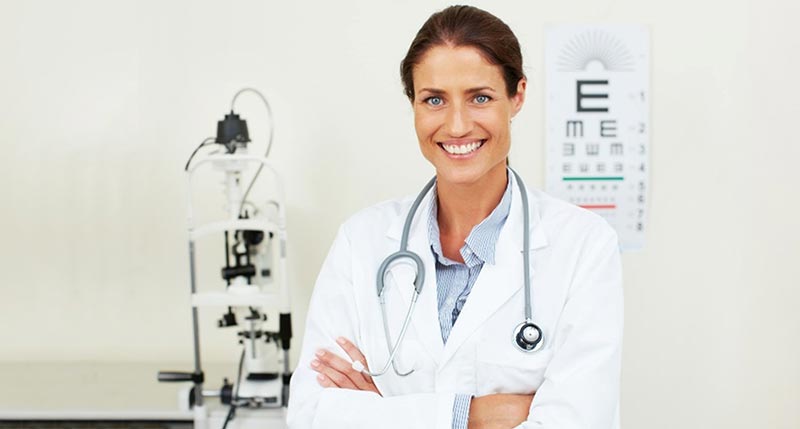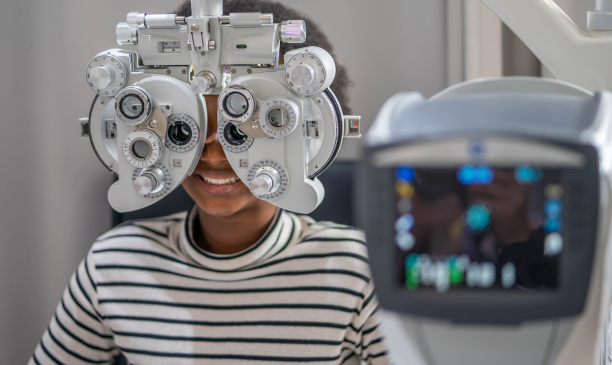Trustworthy Opticore Optometry: Elevating Your Eye Health Experience
Trustworthy Opticore Optometry: Elevating Your Eye Health Experience
Blog Article
The Comprehensive Eye Exam: What to Anticipate During Your Visit to the Eye Doctor
A check out to the eye doctor for a detailed eye exam is greater than a regular exam; it is an important action in safeguarding your visual health. From the first conversation of your medical background to the precision of the visual acuity test, each part of the exam offers a particular objective. But exactly what occurs during the eye health and wellness evaluation, and exactly how does it affect the prescription process? Understanding these components is important for those who wish to maintain optimum sight. As we check out each part, the importance of follow-up suggestions will certainly likewise become clear.
Initial Examination
The preliminary appointment during an eye examination functions as a critical structure for understanding a client's visual health requirements. This stage establishes the tone for the entire evaluation procedure, enabling the eye doctor to gather crucial details about the person's case history, way of life, and certain vision issues. By meticulously assessing any pre-existing conditions, drugs, or previous surgeries, the eye care expert can tailor the exam to deal with specific demands effectively.

Moreover, the initial assessment is a chance for patients to articulate any kind of concerns or concerns, fostering a collective relationship with their doctor. This interaction not only guarantees that the client feels notified and comfortable but additionally empowers them to get involved proactively in their eye health and wellness management. Jointly, these conversations enable the optometrist to design a customized exam plan, making sure ideal treatment and accurate diagnosis.
Aesthetic Skill Test
Beginning the core components of an eye evaluation, the visual skill examination is made to evaluate the intensity and clearness of a person's vision. This crucial examination aids determine exactly how well a person can discern letters or signs at a standard range, typically using a Snellen graph (Eye Doctor Optometrist). The chart comprises rows of letters that decrease in dimension from top to bottom, with the person positioned at a popular range of 20 feet
Throughout the examination, the client is asked to cover one eye and check out aloud the tiniest line of letters they can see clearly. This procedure is repeated for the other eye. The outcomes are videotaped as a fraction, with 20/20 vision showing regular aesthetic acuity-- where the client can see at 20 feet what an individual with typical vision can see at that range.
The visual skill examination also identifies potential refractive errors such as hyperopia, astigmatism, or nearsightedness, which could necessitate corrective lenses. By developing a standard of visual performance, the examination is a crucial analysis device that helps the eye treatment expert in establishing a suitable therapy plan tailored to the patient's distinct visual requirements.
Eye Health Assessment
Complying with the visual acuity test, a detailed eye wellness analysis is carried out to guarantee the general well-being of the eyes. This important segment of the eye examination involves an extensive examination of both the exterior and internal structures of the Click This Link eye.
With the use of ophthalmoscopy or fundus photography, the retina, optic nerve, and blood vessels are carefully evaluated. In many situations, pupil extension is performed to enhance visibility of the internal eye frameworks, although this might result in short-term light sensitivity for the client.
Furthermore, intraocular pressure is measured to screen for glaucoma threat. This is typically done utilizing tonometry, which can identify elevated pressure degrees that might recommend potential damages to the optic nerve. Jointly, these assessments develop an extensive analysis to preserve ocular look what i found wellness.
Refraction and Prescription
How does one guarantee optimal vision? An important step hinges on the process of refraction and acquiring an accurate prescription. Refraction is a sophisticated treatment conducted by eye care experts to determine the precise lens power needed to remedy refractive mistakes such as nearsightedness, hyperopia, presbyopia, and astigmatism. The goal of this procedure is to examine exactly how light bends as it goes through the eye, allowing the specialist to determine whether corrective lenses are needed for enhanced visual acuity.
Throughout the refraction process, the client is asked to browse a phoropter, a gadget that includes numerous lenses. The specialist will systematically transform these lenses and ask the client to contrast quality between alternatives up until the most effective feasible vision is achieved. This procedure is essential in crafting a precise prescription that specifies the suitable lens power for eyeglasses or get in touch with lenses.
The prescription stemmed from this treatment not only optimizes vision however likewise acts as a structure for picking suitable rehabilitative glasses. It is important to make sure that prescriptions are consistently updated, as modifications in vision can occur with time, emphasizing the value of routine eye examinations. This precise focus to information aids keep clear, comfy vision in every day life.
Follow-Up Referrals

Throughout a follow-up browse through, the eye medical professional will conduct a collection of tests to assess aesthetic skill and look for any kind of adjustments in vision that may necessitate an upgrade to the prescription. Furthermore, the follow-up supplies a possibility to go over any type of pain or problems experienced with current eyewear. Modifications can be made to make sure convenience and efficacy, whether through lens adjustment or framework modifications.
For clients with ongoing conditions such as glaucoma, diabetes-related eye problems, or macular deterioration, more regular follow-ups may be needed. These consultations are vital for managing and possibly reducing the progression of eye disease. Abiding by these referrals can substantially contribute to maintaining visual wellness and preventing lasting difficulties.
Conclusion
The comprehensive eye examination is a vital process for preserving aesthetic health and wellness, encompassing a comprehensive analysis of medical background and vision problems. Trick parts include the visual skill test, which reviews eyesight clearness, and the eye health analysis, which analyzes the total condition of the eyes.
A check out to the eye medical professional for a comprehensive eye exam is even more than a routine exam; it is an essential action in safeguarding your aesthetic health.Kicking off the core components of an eye evaluation, the visual skill examination is developed to assess the intensity and clarity of a client's vision.Adhering to the aesthetic skill test, a thorough eye wellness analysis is carried out to make certain the general wellness of the eyes. These brows through permit the eye care professional to monitor adjustments in vision, upgrade prescriptions, and evaluate the general health of the eyes. Secret elements consist of the visual acuity test, which assesses vision clarity, and the eye health evaluation, which examines the overall problem of the eyes.
Report this page